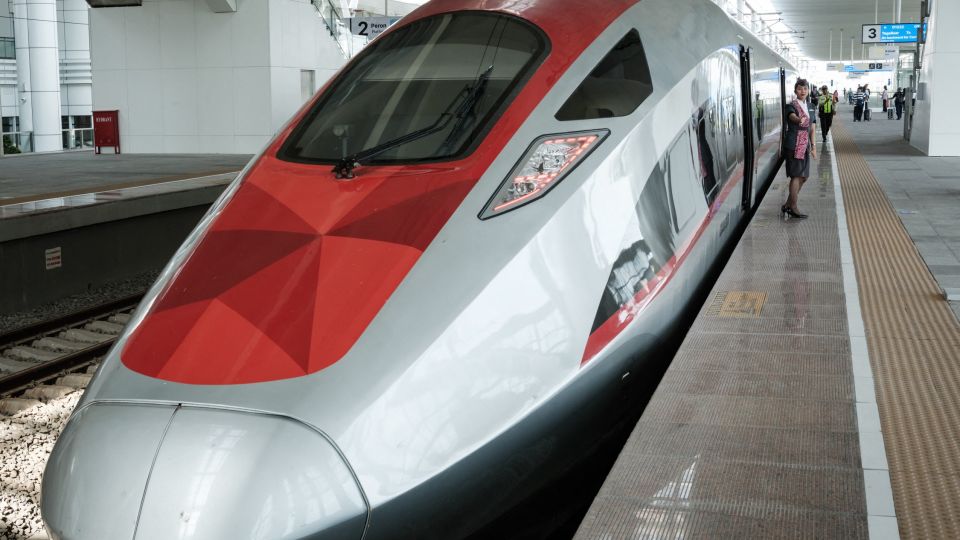September 30, 2025
BANGKOK – Indonesia’s high-speed rail line is already facing a financial downturn after opening in October 2023.
The line was developed under Chinese leadership as a flagship project of the Belt and Road, a massive economic zone initiative. However, with low ridership and ballooning project costs, there are no signs of it becoming profitable.
The situation could raise questions about the Indonesian government’s decision to switch from Japan’s bullet train system, which was initially favored, to the Chinese proposal.
The line is the first high-speed rail line in Southeast Asia. It connects Indonesia’s capital, Jakarta, with Bandung, allowing approximately 140 kilometers to be covered in about 45 minutes. Eva Chairunisa, general manager corporate secretary of the operating company, KCIC, has boasted that traveling is becoming faster, more comfortable and more efficient.
However, the operating distance is short for a high-speed rail line, which creates a bottleneck, and the stations are located far from city centers. As a result, 10.7 million passengers had ridden on the line as of the end of July. According to local major newspaper Kompas, daily ridership remains at only about one-third to one-fourth of projections.
Delays in land acquisition and changes in construction methods pushed the opening date back four years from the initial 2019 target. Furthermore, the total cost of the project ballooned to $7.2 billion (about ¥1 trillion), exceeding the original estimate by 30%.
KCIC is 60% owned by a consortium of Indonesian state-owned enterprises, including the national railway KAI, while 40% is owned by a Chinese consortium. The Indonesian consortium posted a deficit of 4.195 trillion rupiah (approximately ¥38 billion) in 2024, a 4.3-fold increase from the previous year. It also recorded a deficit of 1.6 trillion rupiah in January-June 2025. KCIC’s overall deficit is likely even larger when including figures from the Chinese side, whose financial results are not publicly disclosed.
The Indonesian government has outlined plans to extend the high-speed rail network by over 500 kilometers — more than triple its current length — crossing Java Island to reach Surabaya. The government aimed to capture demand for long-distance travel from air travel providers and thereby boost passenger numbers, but the plan is now on hold due to mounting debt.
When the construction was planned, Japan and China engaged in a fierce bidding war. In 2015, the Indonesian administration of then President Joko Widodo opted for the Chinese proposal over the Japanese Shinkansen system, which had been considered the frontrunner. The decisive factors behind that decision were reportedly China’s offer to cover 75% of the project cost through financing from the China Development Bank, which would remove the financial burden from the Indonesian government, and its promise of early completion.
Since August, local media outlets have been reporting on a statement by a KAI executive warning that the debt issue is a time bomb. The Indonesian government in mid-September indicated its intention to renegotiate the debt burden. However, it remains unclear whether China will agree to do that, and President Prabowo Subianto, who took office in 2024, now has to deal with the missteps of the previous administration.
Plans for high-speed rail development have also emerged in other Southeast Asian countries like Vietnam. Japan, which formulated its strategy of exporting infrastructure systems in 2013, aims to expand its intake of orders for the Shinkansen system. Indonesia’s high-speed rail project could become a “bad precedent,” potentially enhancing Japan’s competitive advantage against China.
Akihiro Tomita, a senior research fellow at the ASEAN-India Regional Office of the Japan Transport and Tourism Research Institute, said, “Japan needs to analyze the current state of railways built with support from competing nations and leverage the analysis in future bidding competitions.”


